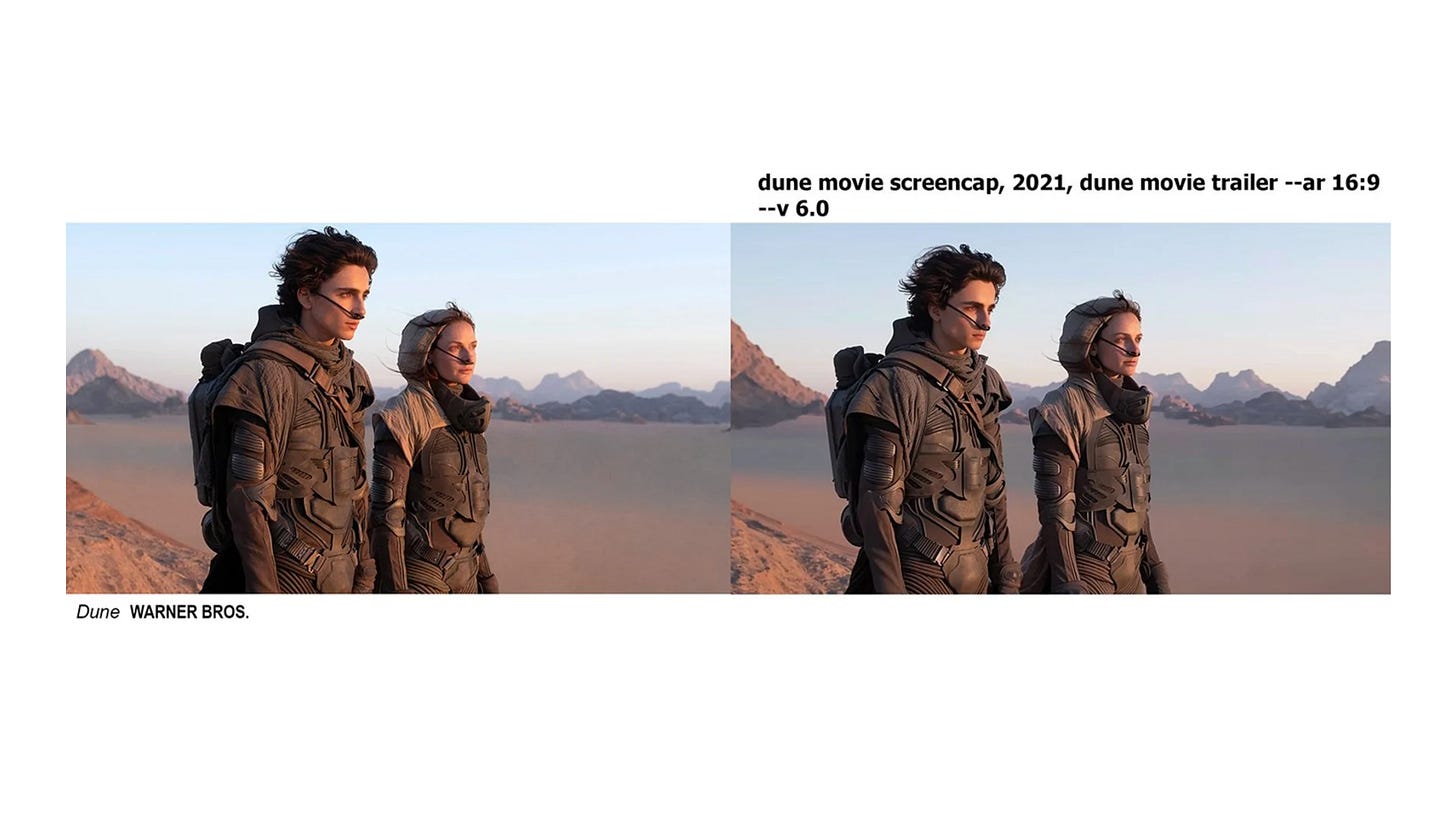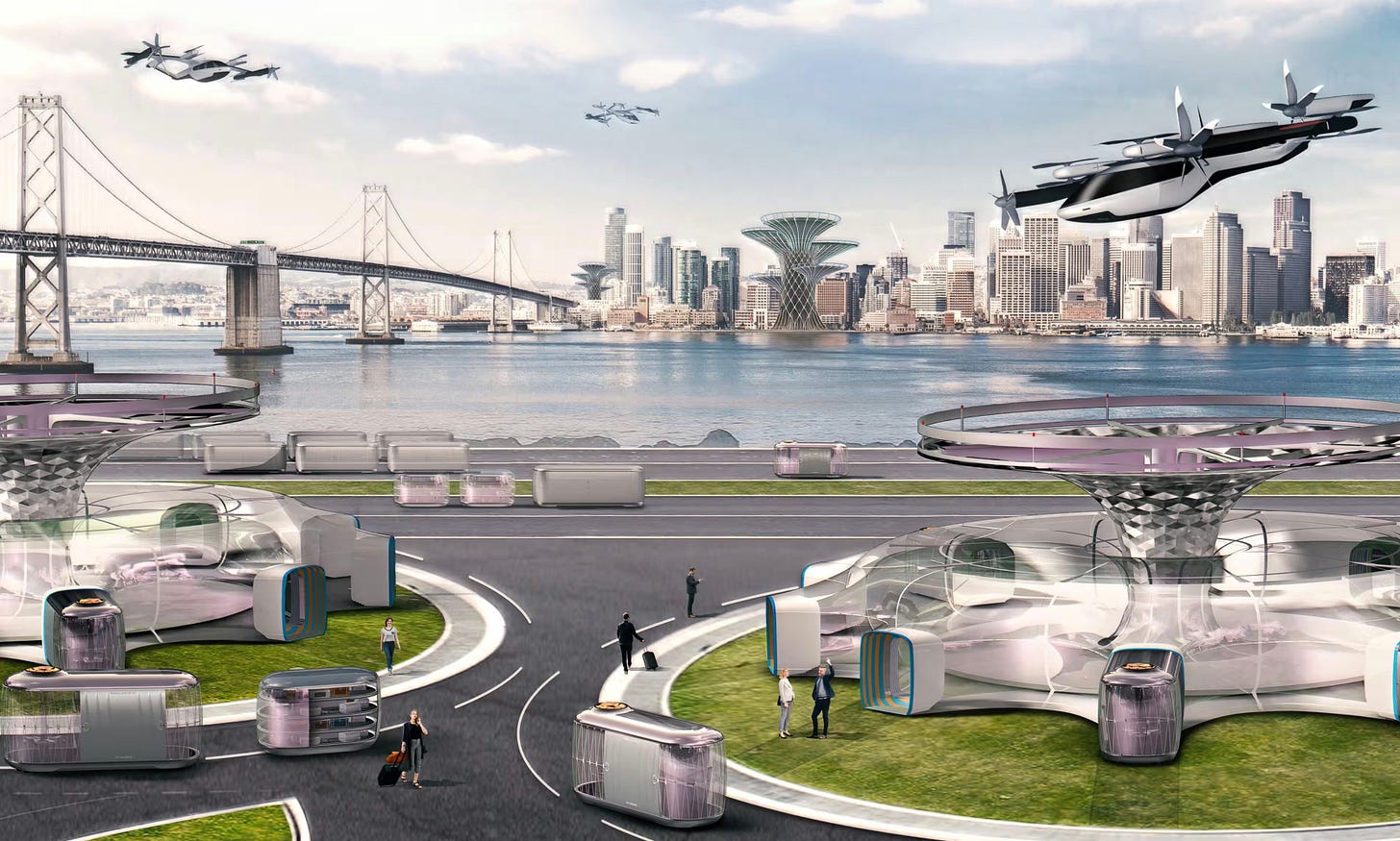Seeing through design, Part I: The narrow scope of the design industry's futurist vision
How realistic are designers' claims to change culture when our idea of the future is so specific?
This is part one of a two-part series on how the design industry sees the future. You can find part two here.
For me, the future doesn't exist anymore.
At least not in The Future™ that has been sold to us—that manufactured, trademarked, advertised idea of how great life will be just a few short years from now.
Until recently, I was lost in the sauce, planning what would happen in my life (under unreasonably perfect conditions), visualizing the possibilities of future tech and the promises it would bring—high-speed transportation with hyperloops, faster digital interactions with computer-brain interfaces, and life-extension technologies—the stuff of sci-fi.
So what happened?
Nearly five years ago, I started thinking about the future of the planet rather than just The Future™ of society. I reckon this was due to my love of the outdoors, reignited in 2017 when learning to rock climb allowed me to have close conversations with nature and my self-doubt. I'm sure the trauma of not continuing that conversation for the entirety of Spring 2020 also helped.
Somehow, thinking about the future of an aged thing makes you look at its past and, consequently, your own; learning more about our collective climate trajectory made me think about my personal path and that of society. I learned to look like a child does.
"Why x instead of y?" "Why does this work like that?"
Eventually, I realized that my profession had often co-opted my imagination: Design became my all-encompassing reality, not just something I did, and I took many of its central teachings (ahem, Modernism) as gospel instead of guesswork. Along with rock climbing, my transition to freelancing a couple of years after COVID helped spur this epiphany.
Having days filled not with design but with a multitude of things—invoicing, business planning, reading, designing, breathing (correctly), project managing, lunch with my wife, writing, looking for work, looking out the window—helped to separate "Me, the Designer," from "me, the person."
So, in this two-part issue, I want to look at the future from two perspectives: first, deconstructing it as a Designer and then reconstructing it as a person who designs.
Intravenous technology
The contemporary design industry implicitly values tech progress and ultimately sees it as social progress. The two ideas are nearly inseparable. Better tech means we've developed more as a society and are better people for that. Here, "tech" refers to a specific type of technology: proprietary, refined, and sellable rather than open-source, natural, or sharable. These refined technologies turn social value, held by society as a whole, into business value, held by companies and their shareholders.
This "enclosure" happens surprisingly often. Now, in fact. Tech companies are co-opting AI models developed by public research institutes, vacuuming up all of the information on the internet—copyrighted or not—to train said AI models, and then re-selling us an informational slop in some tech version of The Human Centipede.

To quote Matthew Wizinsky in Design after Capitalism,
Developments like [...] the internet, computing, [...] voice-recognition software, nanotechnology, touch screens, and clean energy have all been nurtured and guided by states, not corporations.
We often see tech giants as inventors of these technologies, which builds up the lore of these companies as indispensable. It reinforces the idea that the tech culture that spits out these products is a cornerstone of our industry. Because of this, not only do we use them to shape our designs, but they also shape us; more specifically, we're shaped by the business strategies that drive their creation and commercialization. Like any other consumer, we buy into the story that we need the Apple Pro Display XDR or Vitsœ shelves—or at least good knockoffs—to show we're "real" designers.
How can we not see tech progress as inherently good if much of our identity is wrapped up in buying tech products? What adverse effects—environmental, for example—do we disregard so we can continue to be wrapped in the mystique of Design and The Future™? Again, the social value of making design is caught up in the business value of being a Designer. Before this "come to Jesus" moment, any criticism of tech likely produces a swell of cognitive dissonance.
Totally rational
This idea that tech progress === social progress largely relies on the notion of "rationalism above all," a totalizing mindset that eliminates alternate ways of seeing problems. Emotions and intuition aren't valuable; only empirical data and quarterly returns are. We rarely consider that design solutions could come from different ways of organizing society or giving importance to different values beyond efficiency or frictionlessness.
But where does this rationalism come from?
It might seem like a stretch, but the base of this worldview comes from the Enlightenment period when we began to see separation: between reason and emotion, the mind and body, men and women, upper and lower classes, "civilized" and "uncivilized," humanity and nature. Hierarchies formed or were greatly exaggerated in each case, not passively but through subjugation.
Descartes, one of the fathers of modern science, said the "natural" things—emotions, the body, women, nature—were literally machines and beasts meant to be used and exploited for humanity's betterment. That was their only purpose. Conveniently, this lets those who exploit them, usually men of a particular class or creed, off the hook for damages done. Any bodily or environmental harm is filed under "collateral damage."
The tech industry uses a similar alibi. Is social media producing misinformation that causes genocides? Are infinite scrolling and short-form video creating an attention crisis? Is AI usage producing massive energy costs? These are fine as long as we create shareholder value. Design is caught in the web of responsibility since we develop tech's brand narrative, visual identity, and interfaces. Is this what we want to be known for?
This viewpoint has other shortcomings.
The idea of "rational" thinking assumes that reason and emotion are separable, but are they? You can't separate them unless you're somehow optimistic or confident about what you can do without them, so even the decision to remove emotions is somehow emotional.
Rationalism survives because we're disassociated from our critical, questioning emotions, because we lack community, and because we don't have time to sit and feel. When these yawning gaps are created, the only option left is rationalism. Systems survive because of their connections, so is it any surprise that more systems are breaking down the longer we've been disconnected?
Rationalism also ignores that technology is a small part of the system of social change. "Democratization" is often a word thrown around, but left to their own devices, refined tech like social media, AI, crypto, and NFTs generally create conditions more akin to the Wild West than any 'democracy.'
Sure, ChatGPT can make your life easier, but OpenAI and its investors are the ones striking gold. The user—and because it scrapes all media on the internet, your creative work—is the gold itself, just like our questions for Alexa, thoughts for social media, and cookies for the internet.
Sandboxed design
The design industry doesn't get far when it takes a shot at imagining the future outside of tech, and when we do, it's usually for a specific class of society. Speculative design projects and the companies that commission them are often obsessed with luxury; there's little to no speculation about resource overuse, inequality, or the need to repair the damage past designs have caused. Like Enlightenment thinkers and neoliberalists, it's easy to speculate when you're discounting and externalizing all the harm.
Actual speculative design would consider these things while imagining thriving societies; until then, speculative design is just a luxury daydream. It's a distraction from reality's dystopian aspects, creating a pleasant image for a company and building hype for a 'product' that may never exist—in turn, making the company seem valuable and innovative. Like many other aspects of life, capitalists have co-opted the future to draw eyes away from their current exploitation.

Design's aiding and abetting has been the norm since (at least) the Industrial Age: commercial artists helped forge the "signature" of high-quality artisan craftspeople to make low-quality, mass-produced products, and Modernist designers beautified corporate messaging that focused on the consumer's emotional shortcomings rather than their practical ones.
Even when we make or consume "disruptive" work, it's also within capitalism's purview, which makes us value inconsequential but visible activism more than consequential but invisible questioning. That's why (PRODUCT)RED exists instead of understanding structural adjustment and its effects. Or why designers create activist posters and websites instead of engaging in activism itself. Or why much of the newest sustainable branding appears to be for VC-backed carbon offset companies. Visibility trumps effect.
Focusing on the symbolic part of systems change helps us ignore the structural part—that is, we make incremental adjustments to the current system instead of creating a new one. We play in the sandbox instead of engaging with the world.
So, how do we engage? How else can we see the future? We'll explore that next time. In the meantime, if you haven't already, consider how the tech industry might be appropriating your vision of design and what you do with it.



